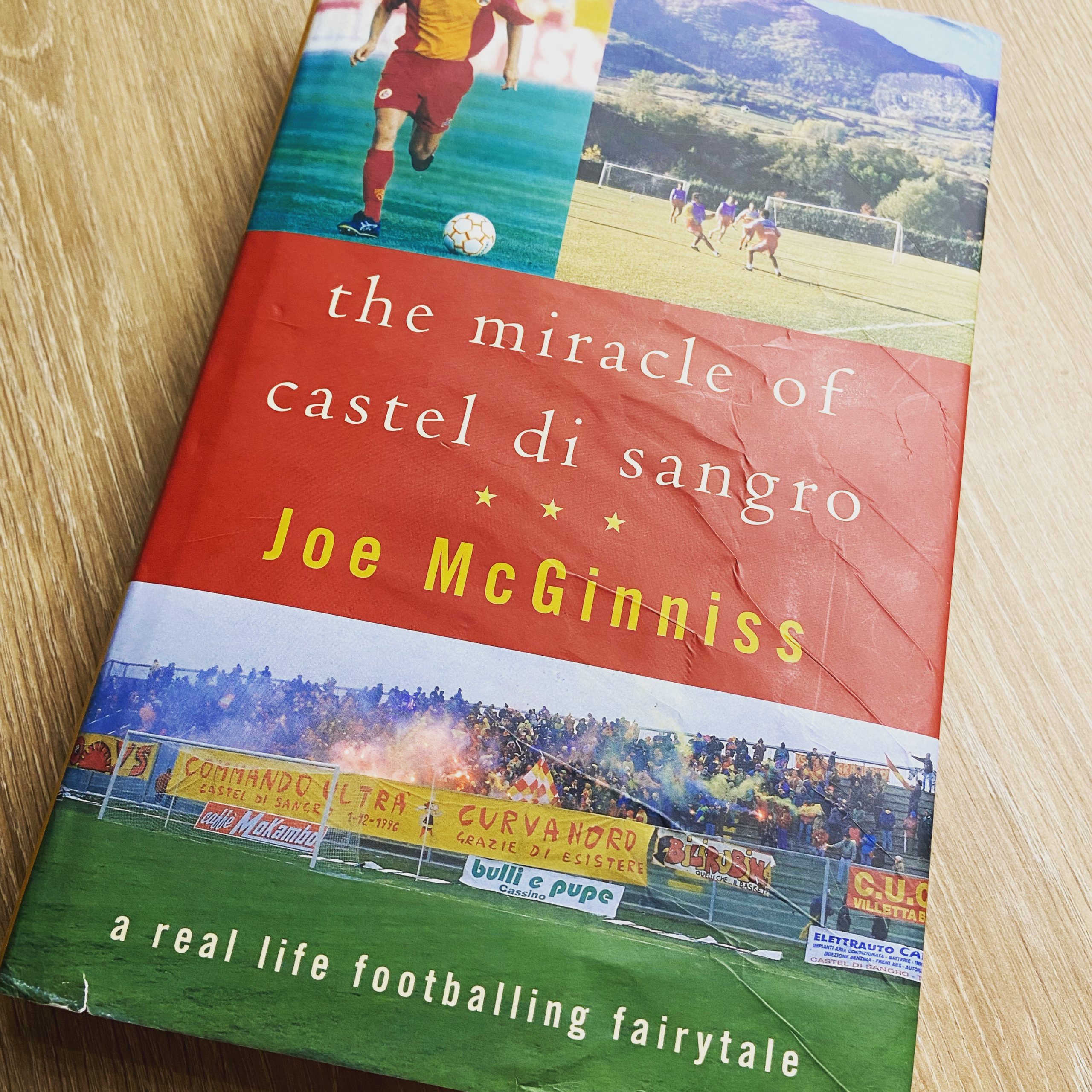Today marks 25 years to the day since the start of the 1996/1997 Serie B season, the beginning of a season which saw the late Joe McGinniss follow the underdogs of Castel Di Sangro in their inaugural season in the division. The book’s title, The Miracle of Castel Di Sangro, refers to the meteoric rise of the football club of a town with a population of just 5,500 to the second division of Italian football.
The magnitude of this achievement does seem all the more remarkable to me, with the village I live in England being of equal size. This achievement is the equivalent of my village’s football club making the EFL Championship, something which would seem impossible.
McGinniss was better known for crime novels and political journalism but grew a love of Calcio (Football) after watching the 1994 FIFA World Cup that was held in his home country of the United States. I don’t want to dive too much into what McGinniss witnesses as he follows the club across the country, battling much bigger and more famed opponents but some of what happened to that club during the season defies belief when reading today.
In the book, you get to know such characters as the Head Coach Osvaldo Jaconi, the club’s owner Signore Rezza, the Club President Gabriele Gravina and players such as captain Antonello Altamura, goalkeeper Massimo Lotti and Gigi Prete. You follow the club’s trials and tribulations including being forced to play in Chieti (a 90 minute journey away) whilst their Stadio Teofilo Patini home was upgraded to comply with regulations, eventually having a capacity of 7,200 – larger than the town itself.
25 years on, how has the club faired since? Jaconi was sacked the following year and replaced by 1982 World Cup winner Franco Selvaggi, however they were still relegated into the C1 division. The following season, they had relative success in Coppa Italia, reaching the Round of 16 after defeating Serie A teams Perugia and Salernitana before succumbing to Inter Milan. Unfortunately after suffering financial difficulties the club was wound up in 2005 after further relegation’s to Serie D.
A phoenix club was born that same year, called Pro Castel Di Sangro and competed in the Promozione, the sixth tier of Italian Football. In 2008 they were renamed A.S.D. Castel di Sangro Calcio but were wound up again in 2012. The club was reformed again as ACD Castel di Sangro Cep 1953 and for the 2021-2022 season will play in Eccellenza, the nation’s fifth tier.
The club plays at the Complesso Polisportivo Erba Sintetica, located across the road from the club’s former home at Stadio Teofilo Patini. They may no longer play there but in 2017 it became the regional federal centre of the FIGC, hosting matches for the nation’s Under 21 team in recent years. Large teams such as Genoa, Livorno and Lecce have used the stadium as part of their pre-season preparations with Serie A club S.S.C. Napoli basing themselves there in the summer of 2021.
As for the club’s former players and management, Osvaldo Jaconi would manage a further 13 clubs across Serie B, C1, C2 and D – earning promotion to Serie B twice more, in 1999 with Savoia and 2002 with Livorno. He was last seen as Academy Manager of Fermana in 2019.
Massimo Lotti would play at the highest level but only once, making a single appearance in Serie A in 1999 for Lecce as they lost 4-2 to Lazio. Roberto Alberti retired in 1998 but returned to club as Manager for a brief period during the 2002-2003 season and had a semi-successful managerial club, managing large clubs such as Bari. Gigi Prete would move to several more clubs before managing a number of clubs in the lower leagues.
Claudio Bonomi who made a big money move to Torino would go on to play for Empoli, Lecce, Sampdoria and Fiorentina before returning to Castel Di Sangro in 2005 for 3 years. Luca D’Angelo has been Manager of Pisa in Serie B since 2018. The young hopeful Gionatha Spinesi would move to Serie A club Bari in 1998 and play for the club for six years, scoring 67 goals in 125 appearances and making a handful of appearances for the Italian Under 21 side.
I was also interested to see how the career of Joe Addo unfolded – playing in Portugal, Greece, the United States and Hong Kong before coaching back in his native Ghana.
As for Marcella’s, I’ve struggled to find if the restaurant is still open.
With 2021 being a successful year for Italian football with the national team winning UEFA Euro 2020, what may come as the biggest shock to those of you that read the book is to hear that former club President Gabriele Gravina has been the President of the Italian Football Federation since 2018.
If you are unaware of the club’s story, or even if you are, The Miracle of Castel Di Sangro is a quality read that you won’t want to put down. Do yourself a favour if its not too late, leave it as a surprise as to what unfolds during the season and transport yourself back to 1996.
The Miracle of Castel Di Sangro is available on Amazon.
Inspired?
Feeling inspired by this book? Check out our guide to Serie A, the top level of Italian football.
Last Updated on December 6, 2025 by Sports Tourist




